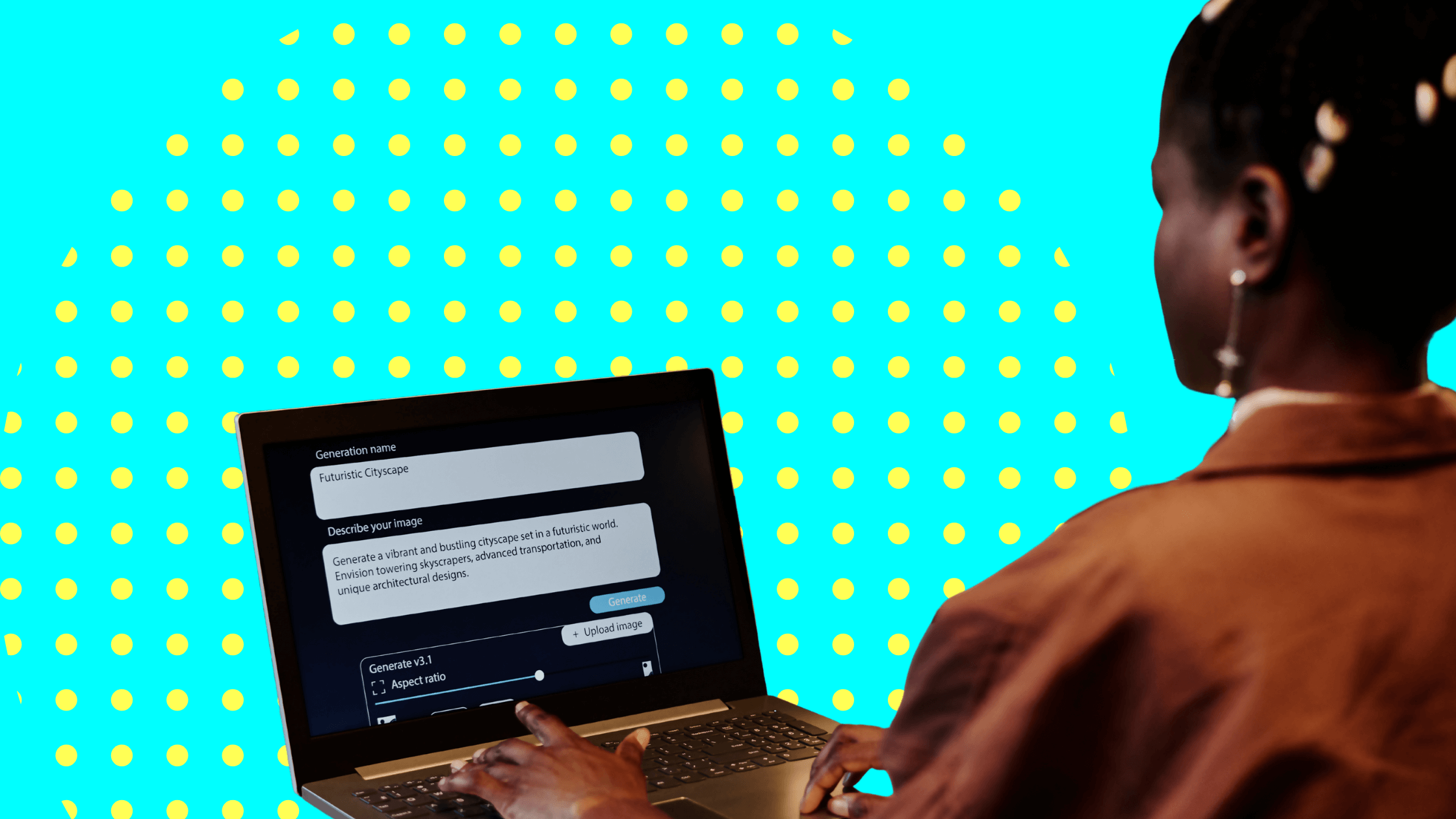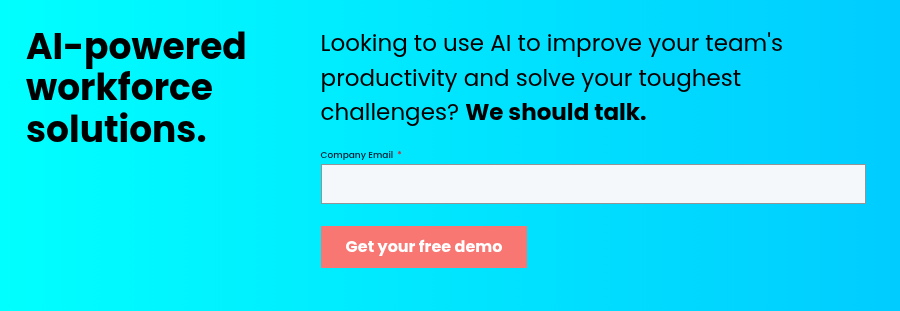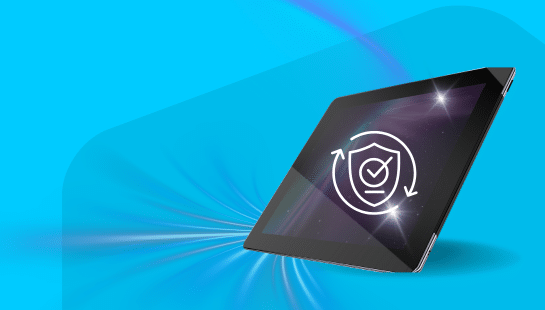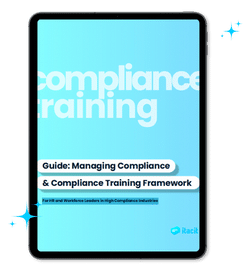Generative AI reached 100 million monthly active users just two months after its launch. This makes AI employee communication tools some of the fastest-growing technology in history. The adoption rate is nowhere near platforms like TikTok, which needed about nine months to hit the same milestone. Almost a quarter of C-suite executives now use generative AI tools. This raises questions about balancing powerful technology with authentic human connections at work.
Companies must decide how to implement AI thoughtfully in their communication strategy. Microsoft research shows employees spend 8.8 hours each week managing emails – over 20% of their workweek stuck in inboxes. AI can reshape this scene by analyzing employee feedback, surveys, and social media interactions to identify patterns that lead to informed decisions. More than 40% of organizations will increase their AI investments because of advances in generative AI. This shows a growing emphasis on using AI to improve communication.
This piece shows practical ways to utilize AI in employee communications while keeping what matters most – human connection. You will learn how tools like iTacit’s AI HR assistant can automate routine tasks without losing your authentic voice. We’ll share strategies that balance technological efficiency with genuine human interaction, from personalization at scale to avoiding automation pitfalls.
Why Human-Centered Communication Still Matters
AI keeps advancing rapidly, but humans remain irreplaceable in workplace communications. AI tools are everywhere now, yet research shows employees value real connections more than algorithmic efficiency. Let’s look at why keeping communications human matters as AI grows stronger.
The role of empathy in internal messaging
Empathy and effective workplace communication go hand in hand. True empathy goes beyond understanding someone’s view, you need to believe their experiences, whatever your own might be. This creates a sense of safety that no tech solution can match.
Employees respond strongly to leaders who communicate with empathy. Workers who feel their organizations and managers care about them take fewer stress-related sick days. They burn out less often, stay mentally healthier, and want to stick with their companies longer. These benefits directly impact your bottom line.
Good communicators focus on goodwill and put people first. They think about how messages affect others, even when sharing tough news like job cuts. Smart leaders put themselves in their team’s shoes before they write any message.
Teams connect better through empathetic communication. Studies show that 74% of employees feel more involved when messages feel personal and caring. About 67% of workers say good relationships at work make them happier and more productive.
Empathetic communication looks like this:
- Listening actively without judgment
- Matching communication style to different people or teams
- Dealing with emotions before jumping to solutions
- Staying transparent and keeping dialog open
Empathy isn’t just nice to have, it’s a powerful skill that gets results. People create more and take bigger risks when they feel understood. Yes, it is why many companies now teach empathetic communication in leadership training, knowing it’s a skill anyone can learn and improve.
What AI can’t replicate
AI is great with data, personalization, and content creation. But it lacks basic human abilities needed for meaningful communication.
AI doesn’t get subtle emotions or context. Tools like iTacit’s AI-powered HR assistant handle basic questions well, but they miss body language, voice tone, and cultural hints that humans naturally understand. This becomes a big problem during sensitive times or company changes.
Real human connections remain out of AI’s reach. Harvard research shows employees prefer responses from human leaders over AI ones, showing they don’t trust algorithms much. This human preference isn’t just feeling, it changes how organizations perform.
McKinsey’s research explains that 70% of successful change management initiatives succeed through human-led communication that addresses emotional and psychological needs, things AI can’t handle. That’s why iTacit’s employee communication platform combines AI’s speed with human oversight.
AI lacks moral instinct and life experience. Without these, AI responses might look perfect but miss emotional undertones that build trust. AI can write a perfect crisis announcement but can’t sit with worried employees and comfort them just by being there.
Organizations using AI in communications face a basic challenge: finding the right mix of automation and human touch. Research shows that while AI offers exciting ways to transform internal communications by making processes faster, companies must be careful to keep human connections strong and reduce misunderstanding risks.
Unlike AI, human communicators build relationships naturally. They read emotions, adjust to responses right away, and handle complex personal situations well. These skills remain vital to create workplaces where employees feel valued, understood, and driven to succeed.
The best approach combines AI’s efficiency with human empathy. This balanced strategy lets AI handle routine work while keeping the human elements that build trust, involvement, and team unity.
How to Use AI in Employee Communications Effectively
Your workplace needs careful planning to use AI in communications effectively. A strategic approach works better than rushing into automation. A Gartner survey shows that 38% of employees feel overwhelmed by too many confusing internal messages. This shows why smart AI integration matters.
Start with a clear communication strategy
You need a well-defined strategy before trying AI tools. This creates strong foundations for successful AI adoption. Research shows companies often miss benefits and struggle with adoption when they lack a complete AI communication strategy.
Your specific communication needs should include:
- Define clear objectives: List your problems and expected outcomes
- Assess existing systems: Make sure your current tools work with AI solutions
- Start small: Pick one tool or limited features before growing
- Review cost versus ROI: Look at both immediate and future benefits
Companies often face problems when they use AI without proper planning. Leadership support falls short, decision-makers fail to work together, and employees resist change. Poor communication remains “probably the biggest cause of problems with [AI] projects”.
Your strategy must deal with data privacy issues too. About 50% of American employees worry about inaccuracy, while 40% fear intellectual property theft when using generative AI in communications. Building trust requires addressing these concerns early.
Use AI to boost, not replace, your voice
What a world of work needs is partnership between humans and technology, not AI takeover. AI handles data and repetitive tasks well. Humans add critical thinking, emotional intelligence, and creativity. These skills create a powerful mix together.
Microsoft’s internal communications teams illustrate this approach well. The team found AI made them better at their jobs instead of fearing job loss. A team member said, “The more we used AI and played around with it, the less worried we became about it replacing roles”.
A “human-in-the-loop” method works best when AI and humans work together on content. AI creates original drafts while humans edit and polish messages to keep emotional connection and subtle meanings. This teamwork achieves better results than either could alone.
AI works best for:
Processing and analyzing data: AI analyzes sentiment faster across communication channels. This helps create evidence-based communication strategies.
Automating routine tasks: AI handles repetitive work like data entry, invoice processing, and simple IT support requests. Your team can focus on strategy instead.
Content personalization: AI-powered tools learn about employee priorities, behaviors, and job roles to share relevant content. This cuts information overload and boosts participation.
Note that AI helps you, not replaces you. Joel DiGirolamo from the International Coaching Federation suggests using AI for first drafts with human oversight: “Generative AI can provide a complete communication to employees that you might not otherwise think over”.
Microsoft’s communications team gained advantages using AI tools like Microsoft 365 Copilot. Small virtual teams tried the technology and shared findings weekly. They kept their approach “very organic”. The results showed more efficiency and creativity. “Using AI to generate ideas and options that we can choose from and refine is part of our process now. We’d be much less effective, and less creative, without it”.
AI skills give you career advantages today. Microsoft’s 2024 Work Trend Index Annual Report shows 66% of leaders wouldn’t hire someone without AI skills. This proves why you need AI in your communication toolkit while keeping human oversight.
Personalization at Scale: AI’s Biggest Advantage
AI-powered tools have revolutionized workplace communications. These tools analyze employee data and provide customized experiences to team members at scale – something previously impossible.
Segmenting employees by role and behavior
Generic communication rarely works well with employees. Marketing coordinators need different information than frontline workers or IT specialists. AI now segments employees by analyzing multiple data points about each person.
“Companies using AI for advanced employee segmentation see up to 35% higher engagement rates with internal communications,” notes a newer study about workplace communication. AI creates dynamic groups based on:
- Job role and department
- Location and work arrangement (remote, hybrid, on-site)
- Past engagement behaviors (which emails they open, links they click)
- Career stage and skill development needs
- Communication priorities and patterns
AI learns and refines segments continuously instead of manual sorting into static groups. iTacit’s employee communication platform identifies which employees respond to certain content types and adjusts delivery. This adaptive approach keeps communications relevant as employee interests change.
Behavioral segmentation provides valuable analytical insights beyond simple demographic factors. AI tracks employees who open emails versus those using mobile apps. It spots who likes video content over text, or reads communications after hours. This detailed understanding leads to targeted messaging.
Results speak for themselves: organizations using AI-driven segmentation see 27% higher readership of internal announcements and 42% better completion rates for important tasks. This targeted approach helps employees manage information overload, especially since they receive 121 emails daily.

Delivering relevant content in real time
AI’s power to deliver personalized content instantly marks another breakthrough after workforce segmentation. Communication teams can’t manually customize messages for thousands of employees, but AI handles this task easily.
Emergency announcements showcase this capability well. AI sends core messages while tailoring specific details based on location, role, or other factors. Production workers receive evacuation instructions for their area, while remote employees learn about service disruptions.
Immediate communication goes beyond emergencies. iTacit’s AI HR assistant answers employee questions right away using your organization’s knowledge base. Employees get faster responses compared to waiting for HR to process requests.
“Employees receiving AI-personalized communications are 31% more likely to take recommended actions compared to generic messages,” workplace technology research shows. This success comes from relevance – AI knows what information each person needs now.
Message timing showcases another AI strength. These systems find the best times to send different messages based on individual work patterns. Early morning email checkers get important announcements then, while mobile app users receive them after lunch.
AI coordinates personalized experiences across email, mobile notifications, intranet posts, and digital signage. Messages stay consistent while adapting format and delivery to each employee’s priorities.
Platforms like iTacit handle technical aspects, making personalization simple to implement. Communication teams can focus on message creation while AI manages personalization and delivery logistics. This creates a perfect blend of human creativity and technological precision.
AI-Powered Tools That Improve Communication
The workplace today needs quick answers to countless questions. AI tools create direct links between employees and information they need. Here’s a look at three AI applications that are changing team communication.
Chatbots for instant support
Gone are the days when employees waited hours or days for answers to simple workplace questions. AI-powered chatbots now give immediate responses to employee questions and boost productivity.
These digital assistants handle everything from benefits questions to IT troubleshooting. Employees now use these tools to draft emails or write reports. Teams are moving away from long emails to quick, real-time interactions.
“If you can be direct and informal with your AI chatbot, why can’t you be with colleagues?” notes one workplace communication study. This change creates a ripple effect. Teams communicate better in a variety of channels, they “huddle” on Slack, give quick updates on Teams, and use visual elements to make information stand out.
Chatbots cut down time spent on common questions. An employee who needs to email a coworker can ask the chatbot for a reminder or even generate the email draft. This automation reduces the need to remember everything while keeping communication smooth.
AI assistants like iTacit for HR and IT queries
Specialized AI assistants like iTacit’s AI Assistant go beyond simple chatbots to change how employees access company knowledge. This tool delivers policies, SOPs, and training documents to your team instantly and securely.
Numbers tell the story: 87% of users say AI assistants helped them find answers more easily than before. Management teams save 4.5 hours weekly by avoiding repetitive employee questions. Reports show that 93% of HR users were surprised by what employees actually searched for.
These specialized assistants stand out because they train exclusively on your organization’s verified content. Unlike public AI tools that might create “hallucinated” responses, iTacit’s Digital Assistant pulls answers straight from your company’s documentation. This keeps information accurate and compliant.
These specialized AI assistants offer:
- Instant, role-specific answers that match an employee’s access permissions
- Less management overhead through self-service information
- Better compliance with up-to-date, policy-aligned responses
- Insights into employee information needs
Frontline workers no longer need to dig through manuals or chase supervisors. Answers to questions like “How do I report a hazard?” arrive in seconds, accessible on personal devices.
Smart search and summarization features
Finding information gets harder as organizations grow. Smart search uses AI to understand what employees really need, beyond just matching keywords.
LumApps puts it well: “Imagine a search engine so astute that it anticipates your needs, offering results that are personalized and relevant with staggering precision”. Employees type a question and get summarized answers pulled from company resources, thanks to natural language processing.
This technology understands context too. When employees look up “expense report policies,” the system knows if they need guidelines, a specific form, or past submissions. This delivers exactly what’s needed without endless searching.
Summarization tools save time in new ways. Apps like Grammarly’s summary writer and QuillBot’s summarizer turn long documents, articles, or emails into quick overviews that capture key points. Meeting transcripts become digestible summaries, and complex policies turn into easy-to-understand snapshots.
AI search connects department silos by working with learning platforms like Udemy and document systems like SharePoint. Employees find everything from training materials to process guides in one place.
These AI-powered tools make workplace communication faster and more accurate. They free people to focus on what matters: creating value through genuine connection and strategic thinking.

Avoiding the Pitfalls of Over-Automation
AI brings huge benefits to employee communications, but businesses must walk a fine line between helpful automation and disconnected messaging. A well-thought-out strategy helps you dodge common pitfalls that can hurt your communication effectiveness.
When AI goes too far
Companies run into trouble with over-automation by rushing AI solutions without proper planning or thinking about the human element. This creates several important risks.
Your communications lose that essential human touch. AI technology, no matter how sophisticated, can’t match human empathy, creativity, or critical thinking. Chatbots might handle basic questions quickly, but they don’t deal very well with complex, emotional situations.
Teams become disengaged when they rely too heavily on automated systems. Your staff members feel less valued and challenged as communications become mechanical. This leads to lower job satisfaction and motivation. The disconnect grows deeper because AI-generated content lacks that personal, genuine connection.
Here’s an interesting twist – automation might boost efficiency, but too much of it actually kills creativity. Letting machines handle too many tasks means you miss out on the human insight needed to think strategically and innovate. The best ideas come from human experiences and gut feelings, things no algorithm can duplicate.
Examples of tone-deaf AI messages
Real-life AI communication failures teach us valuable lessons. In February 2024, Air Canada had to pay damages after its virtual assistant gave wrong information about bereavement fares. The airline rejected a passenger’s refund claim based on the chatbot’s advice, saying bereavement fares weren’t available after ticket purchase.
A Microsoft-powered chatbot called MyCity landed in hot water in March 2024. The bot told business owners they could take workers’ tips and fire employees who reported sexual harassment, both illegal actions.
Major news outlets have stumbled too. The Chicago Sun-Times and Philadelphia Inquirer published summer reading recommendations for books that didn’t exist because an AI tool made them up without fact-checking.
These mistakes show how AI communications can look right on paper but miss vital context or include errors that destroy trust. AI tools without proper supervision can send out tone-deaf messages that ignore emotional subtleties or cultural awareness.
How to keep content human-reviewed
Success lies in finding the right balance, not rejecting automation. AI should boost human work, not take its place. Here’s your roadmap to keeping communications personal:
- Set up clear review protocols, AI-generated messages need human approval before going out, especially for sensitive topics
- Keep human eyes watching, Qualified team members should monitor automated systems and step in when needed
- Build ethical guidelines, Make specific rules about when to use AI and when human communicators should take charge
- Add layered controls, Split AI processes into steps with human checkpoints throughout
People bring the moral compass needed to make sure AI decisions match your organization’s values. This approach prevents biases, discrimination, and unethical messages that could hurt your reputation.
iTacit’s AI HR assistant shows how this works in practice. You get the speed of automation while you retain control. The assistant pulls answers from your verified company documents, but lets humans review responses.
The employee communication platform strikes a similar balance. You can automate routine updates while keeping your authentic voice in important messages where empathy counts most.
Keep in mind that 95% of employees don’t trust their organizations to handle AI properly. Being open about how you use AI, and keeping humans visibly involved, builds faith in your automated systems.
Using AI to Empower, Not Replace, Your Team
AI isn’t here to take over, it’s here to work alongside your employees. Research shows companies now use AI as a partner rather than a replacement. 63% of surveyed professionals already use AI-powered technologies in their work.
Freeing up time for strategic work
AI excels at handling routine tasks and gives your team space to do more meaningful work. The numbers tell a compelling story:
- 89% of employees say fewer repetitive tasks are AI’s biggest benefit
- 92% of leaders see faster work completion as the main advantage
- Professionals expect AI to save them 12 hours each week within five years
These time savings lead to better teamwork. About 75% of leaders report their AI-using teams cooperate better and make smarter decisions. Microsoft’s communications team found their AI tools made them “much less effective, and less creative, without it”.
Note that AI takes care of mundane tasks, so people can focus on what truly matters. Tasks like drafting emails, which take up more than an hour daily for 80% of leaders, become quick work instead of time-consuming chores.
Helping non-writers contribute content
Your team’s voices matter in workplace communication, even if not everyone writes confidently. AI bridges this gap effectively.
AI writing assistants give non-writers templates, outlines, and editing support. These tools analyze videos and turn them into well-laid-out written formats, which helps team members get past writer’s block. They also suggest catchy titles, proper formatting, and the right tone based on the content’s purpose.
Buffer’s AI Assistant helps teams adapt content for different platforms. One user shared, “I often use the AI Assistant to summarize entire blog posts I’ve written into bite-sized social snippets, another thing that used to take me ages”.
Creating inclusive communication experiences
AI makes workplace communication available to everyone, though this benefit often goes unnoticed. AI creates alt text for images and captions for videos automatically, making visual content accessible to people with visual and hearing impairments.
Teams can communicate effectively whatever their native language thanks to real-time translation tools. Features like live captions in Microsoft Teams and Zoom let employees with hearing challenges join meetings fully.
iTacit’s AI HR assistant shows this integrated approach by offering customized support 24/7, while iTacit’s employee communication platform makes information accessible to everyone in formats they can understand.
Measuring Success with AI in Communication
AI success in employee communications is measurable, not guesswork. Research shows companies measuring their communications effectively achieve 47% higher returns to shareholders than those with less effective practices. Here’s how you can track results and optimize your AI communication strategy.
Tracking engagement and sentiment
AI analytics revolutionizes internal communication monitoring. Numbers and data replace hunches with these concrete metrics:
- Open and click-through rates – Messages that grab attention become clear
- Engagement trends – Content that appeals to different teams stands out
- Participation patterns – Employee interaction with content shows clear timing and preferences
- Response times – Employee reaction speed to communications becomes measurable
AI excels at sentiment analysis beyond simple metrics. The technology evaluates text from surveys, chat interactions, and feedback forms to understand employee feelings.
Natural Language Processing algorithms detect mood changes with up to 85% accuracy. These results provide better insights than traditional methods and help identify problems early.
Using feedback to improve AI outputs
AI systems improve through continuous feedback. Employee interactions with tools like iTacit’s AI HR assistant generate valuable data about successful responses and areas needing improvement.
Companies using AI-driven coaching report better communication clarity and collaboration. The numbers speak for themselves – 87% of users say AI assistants made finding answers easier.
HR teams learn about unexpected information gaps 93% of the time when they review employee search patterns. These findings help improve both AI systems and communication strategies.
Data-driven decision-making
Communication teams need clear metrics to succeed. Harvard Business School research reveals most Americans trust their instincts over contradicting data. This approach limits effectiveness.
iTacit’s employee communication platform turns guesswork into precise insights. Teams can see which messages spark action and which miss the mark, enabling quick adjustments.
Success in AI communication measurement combines hard numbers with human feedback. Creating meaningful connections that boost engagement, understanding, and action matters more than just efficiency.
Future-Proofing Your Communication Strategy
AI is reshaping workplace communication. Success in the long run depends on more than tool implementation – organizations need eco-friendly strategies that grow with technology. A recent study shows that 50% of employees want better AI training, while 20% get little to no support.
Building AI literacy in your team
AI literacy extends beyond terminology knowledge. Your team needs to understand AI’s capabilities, limitations, and ethical aspects. Teams might resist change and work less efficiently without proper education about AI-driven tools.
Start building AI literacy through:
- Structured training programs – Offer education that fits different skill levels, from beginners to advanced users
- Interactive workshops – Build spaces where team members feel comfortable to ask about AI applications
- AI champions – Find employees passionate about AI and give them resources to promote adoption
Hands-on experience works best to build AI literacy. Teams need safe spaces to try AI tools in their daily work. Research shows that teams learn better when they “Let them use it to draft emails, summarize documents, or mockup project plans”.

Creating ethical AI guidelines
Clear ethical guidelines make a difference – 71% of employees trust their employers more than universities or tech companies with AI development. Yet only a third of internal communicators know when and how to use AI.
Your ethical guidelines should:
- Assess risks by evaluating ethical, legal, and social impacts
- Set clear criteria to evaluate fairness and transparency
- Create an AI ethics committee with diverse team representation
- Set clear boundaries for AI usage in communications
iTacit’s AI HR assistant shows ethical AI in action. It pulls answers from verified company documents and keeps human oversight while maintaining accuracy.
Staying adaptable as tools evolve
AI technology grows faster each day. Organizations need to stay flexible. Teams that learn continuously adapt better to new capabilities.
Successful teams review AI policies often to match tech advances. Teams learn AI better together. Managers spot real challenges and explore AI solutions with their groups.
Success comes from enabling your workforce to use AI well. Industry experts warn that “Without proper AI literacy, businesses risk inefficiencies, compliance challenges, and missed opportunities”.
Note that AI needs change management. Start with clear strategic goals and build a culture that values continuous learning. Your investment in AI literacy today will strengthen your communication strategy tomorrow.
Conclusion
AI has transformed workplace communication. Technology makes interactions more efficient, tailored, and inclusive while preserving authentic human connection.
Empathy remains irreplaceable. AI excels at data processing and routine task automation, but it can’t match human emotional intelligence that builds trust and engagement. Teams need genuine human interaction, especially during challenges or organizational changes.
Thoughtfully implemented AI tools like chatbots, smart search features, and specialized assistants bring remarkable benefits. Teams can focus on strategic work instead of administrative tasks. These tools help non-writers create content and make communication more inclusive.
AI’s most powerful feature lets you personalize content at scale. AI-powered segmentation delivers relevant content to employees based on their roles, behaviors, and priorities, something that needed massive human resources before. This precision helps critical messages reach the right people when they need them.
The risks of too much automation are real. Messages without human touch, insufficient oversight, and overdependence on technology can hurt trust and engagement. Human review of sensitive communications is vital. The goal isn’t eliminating human involvement but making it better.
Your organization’s future success depends on building AI literacy. A communication strategy needs clear ethical guidelines, training, and regular evaluation of AI tools against success metrics. This helps teams adapt to evolving technology.
iTacit’s AI-powered HR assistant shows this balanced approach by finding answers from verified company documentation while keeping human oversight. The employee communication platform automates routine messages, but keeps your authentic voice for moments that need empathy.
Finding success with AI in workplace communications isn’t about choosing between technology and humanity, it’s about discovering where they work best together. AI handles repetitive work, data analysis, and content personalization. Humans provide creativity, emotional intelligence, and ethical judgment.
This balance creates an efficient and authentic communication strategy that saves time and deepens employee commitment to drive innovation and organizational success.










